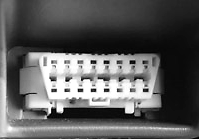OBDII Explained
OBDII stands for “On-Board Diagnostics, 2nd Generation.” The 1990 Federal Clean Air Act required that the OBD computer systems of every vehicle sold in the United States be standardized starting with 1996 light duty vehicles. The OBDII standards mandate a 16-pin diagnostic connection port with standardized communication that allows for a single connector to read the computer systems of every vehicle subject to the CAA mandate. The OBDII standard has grown as all vehicles sold in the United States are brought within compliance. The following timeline shows federal OBDII implementation for different vehicle classes:

Below, we discuss the specific operation of the OBDII computer system and why a vehicle may fail an OBDII inspection:
How does OBDII work?

The OBDII computer monitors a vehicle’s emission control systems in real-time and is capable of informing a motorist or technician of a systemic issue the moment it occurs. The system operates through a series of indicator lights, drive cycles, trouble codes and readiness monitors.
During an inspection, an emission analyzer scan tool plugs into the diagnostic connector that is attached to the OBDII computer and communicates with the vehicle. The OBDII computer relays to the scan tool whether it has discovered errors in the emission control systems. The emission analyzer then determines whether the vehicle is being operated in compliance with emission standards.
Back to top
Reasons for Failing an OBDII Inspection
The most common reasons for a vehicle to fail an OBDII inspection are:
OBDII diagnostic connector is missing, damaged or inaccessible
OBDII communication fails
MIL remains illuminated while the engine is running
OBDII monitors are not ready
Back to top
Malfunction Indicator Light (MIL)
If a problem is detected, the MIL will illuminate on the dashboard as a variation of one of these symbols:

If the MIL illuminates and remains lit, the OBDII computer has detected an issue in an emission control system. These issues can range in severity, and it is recommended that the motorist immediately assess the reason for the MIL being on. Common reasons for the MIL to illuminate are:
- Malfunctioning component(s) that regulate fuel/air ratio (e.g. oxygen sensors)
- Issues with the Exhaust Gas Re-Circulation (EGR) valves
- Dirty air filter
- Engine misfire (e.g. spark plugs)
- Leaks in the vacuum system
- Catalytic Converter error or failure
- Issues with evaporative control(s), such as a poor-fitting gas cap
If the MIL illuminates, it is a possible indication of a very serious engine issue.
Do not ignore this warning!
Ignoring the MIL may cause further engine damage, thousands of dollars in repair costs and may void any warranty you hold on the vehicle. Auto manufacturers can identify when an MIL illuminated and will know if the issue was addressed. To save a potentially minor issue from becoming a significant one, perform the following if the MIL illuminates:
1. Pull your vehicle over to the side of the road at the soonest and safest possible moment (it is recommended that you exit any highway you may be on, if it is safe to do so);
2. Turn off your engine;
3. Check your gas cap to make sure it is properly secure (twist it until it clicks);
4. If the gas cap was already secure, take your vehicle to an automotive professional immediately;
5. If the gas cap was not secure, you are still encouraged to take your vehicle to an automotive professional and have a diagnostic test run to ensure the issue is resolved.
If your vehicle is under warranty, it is recommended that you call your dealership or warrantor prior to restarting your engine. Doing so may absolve you of responsibility if the issue is covered by warranty.
Back to top